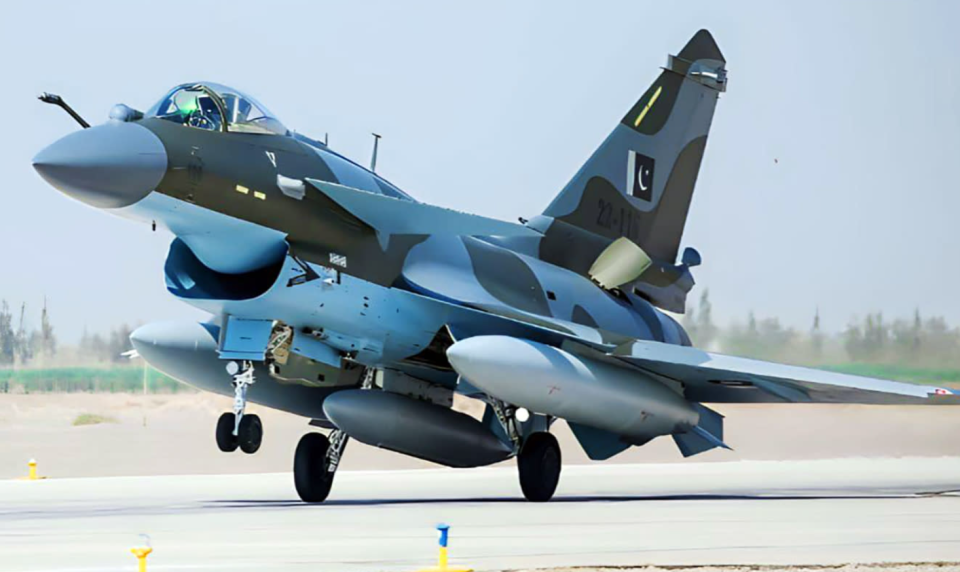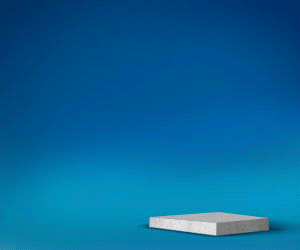As the dust settles, at least for now, on the latest clashes between India and Pakistan, it’s clear that the nations’ respective air forces played a very active role in the fighting. Many observers are already pointing to the potentially significant impact made by the Pakistan Air Force’s Chinese-made Chengdu J-10C multirole fighters, as well as their much-vaunted PL-15 air-to-air missiles — the latter of which you can read about in depth here. Before looking in more detail at the J-10C, it remains the case that claims from both Indian and Pakistani sources are conflicting, and hard evidence of how these fighters were used and how they performed overall remains elusive. It’s also worth noting that the imagery related to the air war that has been posted to social media, together with claims about possible shootdowns, should be taken as unverified. Large-scale propaganda and information operations, as well as an avalanche of social media exchanges based on vitriol, are still ongoing, and this will likely remain the case for some time to come.

In terms of the recent clashes, it is clear that the J-10C, in particular, has been heralded as a standout performer, which has implications not only in the standoff between India and Pakistan, but also in the context of China’s People’s Liberation Army (PLA), which is the type’s most prolific operator. Provided the successes claimed for the J-10C are accurate, this is still a small sample of combat efficacy in a very unique set of circumstances. Overall, there are limits to the kinds of conclusions that can be drawn from it. Upgrades in terms of new missile, sensor, and networking technologies on fighter platforms happen regularly and could tip the balance in any direction. At the same time, modern aerial combat is less about fighter-versus-fighter than it is about a cocktail of networking, training, weapons employment, electronic warfare, tactics, and combined arms. With all this in mind, to get a better understanding of the J-10C, its advantages, and its limitations, TWZ spoke to our friend Justin Bronk, Senior Research Fellow for Airpower and Technology at the U.K.-based Royal United Services Institute (RUSI) think tank. Combat claims

Pakistan claims to have shot down five Indian Air Force fighters, including no fewer than three Rafale multirole jets. There are reports that a high-ranking French intelligence official, speaking to CNN, confirmed one Rafale shootdown, and imagery published on social media appears to show the wreckage of one of the French-made jets. Sources official and unofficial have attributed at least some of the claimed kills to the J-10C and PL-15 combination. Much clearer footage of Rafale-M88 engine debris spotted again in Bathinda, India.#RafaleDown pic.twitter.com/iVwfepXMQQ — International Defence Analysis (@Defence_IDA) May 11, 2025 Regarding the possible Rafale loss that appears to be supported by imagery, Bronk warns about jumping to any particular conclusions, just as we have done in our previous reporting. “The fact that a couple of U.S. officials have come out and said it appears to have been a J-10 that was involved in the shootdown of the Rafale is interesting,” Bronk says. “That makes it fairly likely that we’re looking at a shootdown, but it is worth emphasizing that at least two PL-15s found in bits of India, where we know they were firing, doesn’t actually mean the Rafale was shot down for sure. The fact that the engine and the tail seem to be a little distance apart does support the idea that it didn’t just pancake, but it is possible, for example, that they ran out of fuel having spent too much time in afterburner and at low level trying to evade shots and had to eject due to fuel starvation on the way back to base. Or friendly fire, or a long-range HQ-9 shot — although that’s a bit less likely, I suspect.” Rotating the original image, and looking at pic of serial BS 001 in better times, from the same side (right/starboard), all the details pretty much line up (“RAFALE” and “BS 001”, roundel flag positioning, slime light, panel lines etc)
If the pic is real, this would call it. https://t.co/dm62aOmHBM pic.twitter.com/IZZwAB2sKP — Rick Joe (@RickJoe_PLA) May 7, 2025 Other imagery may well point to the loss of an Indian Air Force MiG-29 Fulcrum and possibly also a Su-30MKI Flanker. For now, we also don’t know for sure that there is anything to tie these potential aerial kills to the J-10C specifically. On the other hand, the wreckage of several PL-15s recovered on Indian territory points to engagements of some kind involving the J-10. | The remains of a Russian-made MiG-29 fighter jet operated by the Indian Air Force that was shot down by Pakistan a few days ago were found in the Jammu & Kashmir region. Parts of the MiG-29’s RD-33 turbofan engine can be seen among the debris. pic.twitter.com/tjOsr5Ae9S — Status-6 (Military & Conflict News) (BlueSky too) (@Archer83Able) May 11, 2025 The fourth PL-15E missile P15E82204??? https://t.co/gbdgitsUIe pic.twitter.com/mcvCGl5JZI — 笑脸男人 (@lfx160219) May 12, 2025 When Pakistani Foreign Minister Ishaq Dar told parliament that Pakistan Air Force fighters had brought down Rafales, he said he had informed the Chinese, and they were pleased, again pointing to the J-10 and PL-15. Whatever the outcomes, combat employment of the J-10 and PL-15 — which had never happened before now — will also provide China with some very valuable data on the capabilities of its own hardware as well as Western equivalents used by India.
The various air-to-air combat claims have been leapt on by commenters in the Chinese blogosphere and have encouraged a reassessment of the capabilities of the J-10, in particular.

“We may need to reassess the PLA’s air combat capabilities, which may be approaching or even surpassing the level of U.S. airpower deployments in East Asia,” Shu Hsiao-Huang, an associate research fellow at Taiwan’s Institute of National Defense and Security Research, told Bloomberg. “The surprising victory of Chinese J-10 and PL-15 will force people to reconsider the military balance of power in the event of a Taiwan contingency,” said Yun Sun, director of the China program at the U.S.-based Stimson Center think tank. On Beijing’s part, there has been no official acknowledgement about the role of the J-10C in the recent combat. China’s foreign ministry said when asked that it was “not familiar” with the J-10C situation.

J-10 development Before looking at the J-10C version specifically, it’s worth looking briefly at the development path that led to this fighter, which is numerically the most important fully homegrown fighter in PLA use. You can read our previous account of this aircraft’s rise to prominence here. China began work on what would become the J-10 in the early 1980s, with a requirement for a single-engine multirole type to replace the J-7 (the Chinese-made MiG-21 Fishbed) in the air defense role as well as the Q-5 Fantan ground-attack aircraft. Reflecting something of a pattern in Chinese military aircraft development, the program was delayed mainly due to the lack of a suitable powerplant. When it finally emerged, the J-10 featured a delta wing with canard foreplanes, a chin-mounted engine intake, and fly-by-wire flight controls. Much has been made of the conceptual similarities between the J-10 and the Israeli Lavi fighter, although it should be noted that the Chinese fighter is bigger and heavier. While there was certainly some contact between Chengdu and Israel, the J-10 also drew from the company’s earlier J-9 fighter project, which had been abandoned by the early 1980s.
Throughout the 1980s, the development of the J-10 continued to be held up by the lack of a suitable engine and design changes, but a full-size mock-up had been completed by 1991. When the J-10 first flew in prototype form in March 1998, it was fitted with a Russian-made AL-31FN turbofan. By the end of 2003, flight testing had been completed, and the J-10 had entered series production. The new fighter was ready for service with the People’s Liberation Army Air Force (PLAAF) in June 2004. Three batches of the initial-production J-10 were soon followed by the J-10A, featuring avionics improvements including the more capable Type 1473G pulse-Doppler fire-control radar and a revised cockpit. Original J-10s were later modified to the same standards. Meanwhile, the J-10AH was produced as a derivative of the J-10A for land-based naval service.

There is also a tandem-seat trainer version of the J-10A, designated J-10AS, with a large dorsal spine accommodating the electronics displaced by the rear cockpit. The two-seater is fully combat-capable, and the naval derivative is the J-10ASH.

Even in its basic form, the J-10 is a fairly advanced warplane, its cockpit featuring a wide-angle head-up display (HUD), two monochrome multifunctional displays (MFDs), and one color MFD. The pilot is provided with a helmet-mounted sight and ‘hands on throttle and stick’ (HOTAS) controls. When it was introduced, the J-10’s primary air-to-air armament comprised the medium-range PL-11 semi-active radar-guided and the short-range PL-8 infrared-guided air-to-air missiles (AAMs). The aircraft has progressively received new weapons and sensor pods, including medium-range PL-12 active-radar-guided AAMs. More recently, the PL-8 and PL-12 have begun to be superseded by the far more capable PL-10 and PL-15, respectively. You can read a comprehensive account of Chinese AAM development in this previous feature.

To increase missile carriage capacity, a new twin-rail launch pylon was also introduced for the medium-range AAMs. Typical air-to-ground weapons loads include a pair of 1,102-pound LS-500J precision-guided bombs, used in conjunction with a forward-looking infrared/laser targeting pod and an electronic countermeasures (ECM) pod. Other air-to-ground munitions include the YJ-91 anti-radiation missile. After around 270 J-10A/AS aircraft were completed, production switched to the improved J-10B, which was unveiled in 2008. Externally, the J-10B differs in its use of a fixed diverter-less supersonic inlet (DSI), a feature that reduces structural weight and frontal-aspect radar cross-section. The reprofiled radome houses an X-band passive electronically scanned array (PESA) radar, reportedly able to track 10 targets and simultaneously engage four of them. Other new features include an infrared search and track sensor in front of the cockpit, three color MFDs in the cockpit, and a holographic wide-angle HUD.

Production of the J-10B was limited to around 60 examples before it was superseded by the J-10C, which introduced an active electronically scanned array (AESA) radar. Having an AESA radar of any kind is a huge plus point, with these kinds of arrays typically offering extended detection and tracking ranges, improved target discrimination and identification, and the ability to pick up low-flying targets with reduced radar signatures, such as cruise missiles and drones. Without the need to physically move around a mechanically steered radar dish, AESA radars can rapidly scan huge volumes of airspace. Furthermore, AESA technology is more resistant to jamming and is much more reliable than its mechanically scanned predecessor. On the other hand, as Bronk points out, there are many ‘unknowns’ about the J-10C’s AESA.

“Obviously it has a functional AESA radar,” Bronk says. “By all accounts, it seems to be a reasonably capable one. But if you drill down a little bit, there are AESA radars and AESA radars. Some provide simply a much more efficient automatic capability to scan a very large volume, compared to a mechanically scanned array, so that you’re not dealing with bars in terms of vertical and horizontal scan; you can scan basically all of it near-simultaneously. Cockpit workload is reduced, and the ability to work through clutter is better.”

How the J-10C’s AESA rates in this regard is very difficult to know, especially since it will very seldom be used in ‘war mode,’ particularly when there’s any chance that an adversary may be collecting emissions. With that in mind, Pakistan’s J-10C use against India could have a significant impact when it comes to retrospective analysis of these particular engagements, as well as a broader assessment of the J-10 more generally. Another caveat is Bronk’s suggestion that the radar used in the export-configured J-10CE model for Pakistan almost certainly doesn’t feature the same modes as the PLAAF’s J-10C. “It would be slightly surprising if it were,” Bronk says. “There’s a lot we don’t know there [about the radar]. The same goes for what its ECM or even limited electronic attack capabilities might be. Some AESAs have significant capability in that region. Others, much less so.”

Since around 2019, the J-10C has been fitted with the domestically produced WS-10 engine. Any lingering doubts about the reliability of this powerplant and Chinese aircraft engines in general should be addressed by the fact that the WS-10 now powers the in-production J-10C, the J-20A stealth fighter, as well as locally produced Flanker developments, namely the carrier-based J-15 and the land-based J-16 series. Somewhat surprisingly, a subvariant of the J-10C appeared in 2022, with a very prominent enlarged dorsal spine. There was some speculation that this might have been tailored for defense-suppression missions, but instead it has been issued to the August 1 aerobatic display team. Another image of a PLAAF J-10CY from the „Ba Yi“ aerobatics team. (Image via @凰天霸 from Weibo) pic.twitter.com/rdc0Jw0Fqm — @Rupprecht_A (@RupprechtDeino) March 27, 2023 Comparative assessment Overall, Bronk considers the J-10C as the “definitive, mature variant” of the J-10 and a fighter that’s broadly comparable to a modernized F-16C/D Block 50 in terms of rough size, carrying capacity, and agility. When it comes to kinetic performance, the thrust-to-weight ratio between the two aircraft is probably “fairly similar, depending on the engine fit of each one. A Block 50 F-16CM with a General Electric engine probably has a slightly better thrust-to-weight at combat loadings than a J-10 and slightly heavier Block 52 with the Pratt & Whitney, for example, a ‘big-spine’ variant that’s a bit heavier, might have a slightly worse thrust-to-weight ratio than a J-10C, depending on combat weight.”
“Just like a lot of F-16 Block 50s are currently, the J-10A was probably fairly limited in terms of its radar performance compared to something like a Flanker, let alone fifth-generation aircraft, due to the fact that it’s a fairly small nose and relatively limited power output for a mechanically scanned radar. Of course, the J-10C fixes that to some degree, at least with an AESA, as does the Scalable Agile Beam Radar (SABR) upgrade for an F-16.”

There have been suggestions that Pakistan made extensive use of the J-10C in the recent air battles with India, while keeping its F-16 fleet out of the combat, as a political consideration. Over the years, there has been considerable U.S. political opposition to selling F-16s to Pakistan at all from members of Congress. Above all, there have been allegations that Pakistan’s state security apparatus is at least complicit in various terrorist activities, and perhaps even supporting them outright. With this in mind, Pakistan may think twice about using its F-16s against India to avoid restrictions on future military aid from the United States — in the past, planned F-16 deliveries have also been embargoed. At the same time, as Bronk contends, there would be certain missions for which the Chinese-made fighter would stand a better chance of success, especially for long-range air-to-air shots.
“The F-16s, and the AMRAAMs that they operate are, from a radar and a missile point of view, almost certain to have a significantly shorter maximum range and no-escape zone than the J-10CE with PL-15,” Bronk asserts. “It’s an AESA radar and a missile with better kinematics versus a mechanically scanned radar and a missile with less kinematic capability. In terms of those sorts of potential engagements that we seem to have been looking at in the recent clash, where both sides are carefully staying on their own side of the lines, at least as some long-range missile shots are being taken, the J-10C would represent a higher likelihood of kill compared to Pakistan’s F-16s.”

According to at least one unconfirmed report in the Pakistani media, citing unnamed sources, the longest PL-15 shot taken during the clashes was 98 nautical miles, or around 112 miles. The non-export PL-15 is generally assessed to have a maximum range of around 124 miles. There have also been reports in Western media that Pakistan might have received a longer-range version of the export PL-15E, which would explain engagements at these kinds of distances. As we have discussed in our previous coverage, there are various reasons that might explain the appearance of expended PL-15s on Indian territory: The loss of missiles, especially in a relatively intact state, can be the result of many circumstances. This includes shots taken at the maximum reach of a beyond-visual-range missile’s capabilities, without prolonged guidance support of the launching aircraft. These launches can be used defensively or offensively, with the missile being fired at a target and entering into its ‘fire-and-forget’ mode, without assistance from the launching aircraft, long before its own seeker activates. These shots are made with the missile best predicting where the target will be based on initial telemetry up until its launch aircraft stops sending it mid-course updates. The missile’s onboard radar, which has short range, would then turn on and search for the target when it thinks it’s within range.
This mode of fire drastically lowers the probability of a kill, but it also can greatly enhance the survivability of the launching fighter. Considering no Indian or Pakistani aircraft reportedly crossed over the border during these extensive air-to-air skirmishes, longer-range shots made with limited guidance by the launch aircraft likely occurred, with most aircraft staying far enough away from each other to survive the maximum capabilities of the opposing force’s weapon systems. Mid-course updates provided from the launching fighter’s radar would also be truncated due to the aircraft’s proximity to the border and the need to turn physically away from it so as not to cross it or enter deep into the engagement envelopes of opposing fighters and surface-to-air missile systems. Just turning on a fighter radar for an extended time in such a high-threat area can lead to rapid detection and death.

Long-range shots also mean that the missiles would more likely be at a very low energy state when they eventually impact the ground. Once again, there are many reasons why a missile could turn up relatively intact like this, but considering what we know about the tactical situation along the border, this seems like one very likely possibility. PL-15 significance Another aspect that could have played into the potential success of the J-10C is the fact that India likely has a much better understanding of how AMRAAM works and is therefore better able to optimize countermeasures for it, compared with the PL-15, and particularly the PL-15E export model. Bronk continues: “The ability of the Rafale’s onboard electronic countermeasures system and radar warning receiver to potentially detect an incoming missile seeker and/or respond to try and improve the effectiveness of missile defeat maneuvers through ECM is potentially lower against the PL-15 than against AMRAAM, just by dint of the fact that there may be less known about it.”

Alongside the J-10C, the PL-15 is being pitched by some observers as one of the decisive players in the recent clashes, although the capabilities of this weapon have been on the minds of Western planners for some years now.

“The main significance of PL-15 is that it’s probably the first time that China produced an indigenous air-to-air missile that is not just markedly superior to Russian alternatives but is markedly superior to most U.S.-made equivalents in terms of really long-range capabilities,” Bronk explains. “Previously, the PL-12 was kind of interesting in the sense that it’s got quite nasty kinematics close in, but broadly speaking, AMRAAM was still comfortably the better weapon in most scenarios, particularly the later model ‘Charlies’ and the AIM-120D-3.”

“The PL-15 is at the very least leveling the playing field and in some cases, posing problems that put the United States at a range disadvantage with AMRAAM,” Bronk adds. Indeed, the appearance of the PL-15 has already contributed to a rush from the U.S. side to push for longer-range AAMs, like the AIM-260 and AIM-174B. The PL-15 should also be characterized by the advantages of its AESA seeker, Bronk notes. “Just based on the physics of an AESA seeker versus a mechanically scanned seeker or a fixed PESA-type seeker, it should be higher resolution, more resistant to ECM, and work better in jamming environments.” Beyond that, it likely has a better ability to home in on stealth targets.
“The Chinese, for a long time, were essentially followers and were either customers for Russian weapons or were essentially producing clones of Western systems as best they could, whether that be Python clones, Sidewinder clones, or Sparrow clones,” Bronk continues. “The PL-15 is different, and so it represents a significant maturation of the Chinese industrial and research and development base.” Meanwhile, the PL-15 is just one of several Chinese AAM programs that are looking at very long-range performance in particular. While continuing to develop and improve its AAMs, China is also able to produce them in large quantities.
Among the unknowns involved in Pakistan’s use of the J-10 in combat, Bronk raises the issue of integration with airborne early warning and control (AEW&C) assets, or more accurately, the degree to which the fighters can cooperate with these radar planes. “Are we talking voice [communications]? Are we talking full datalink interoperability? Are we talking third-party targeting capability, and does that extend to third-party missile support in flight?” No one beyond the Pakistan Air Force or Chengdu will have the full picture of this important aspect of the J-10C’s capabilities, although it is of central importance, especially in terms of long-range air-to-air engagements.

Further development and export prospects As to what comes next for the J-10, Bronk considers it unlikely that the PLAAF will seek a D-version of the fighter beyond the current J-10C, with efforts now likely to be centered upon the medium-weight J-35 stealth fighter, not to mention sixth-generation programs. “They are probably looking to replace or start supplanting it at some point,” Bronk says of the J-10C, “while no doubt they will continue to upgrade and maintain the relevance for the J-10s that they have.” That might also involve a retrofit of J-10Bs to C-standard with the AESA radar and the new engine. “I don’t know how much work that would be, but it would make sense, assuming it’s not cost-prohibitive.” Most likely, the J-10C’s fortunes will lie more with the lucrative export market. “I suspect what you’ll see is a push on exports,” Bronk says, drawing a parallel with the advantages that mass export bought the U.S. military in terms of its own F-16 and F/A-18 fleets, long after it has ceased purchasing them in large numbers for its own forces, and nominally at least, moved on to the F-35 and F-22. Considering that China might be able to offer for export a J-10C at a unit cost of $50 to $60 million, in Bronk’s assessment, this would make a lot of sense for certain operators, especially those looking to supplant increasingly hard-to-maintain Russian-made types, in particular.
That kind of price tag would make the J-10C “extremely competitive as an option for non U.S.- or non-European aligned countries that want to replace aging MiG-29s, Su-27s, and Su-30s, with something that’s cheaper to not just to buy, but to operate, is easier to maintain, and has compatibility with a wide range of air-to-air and air-to-ground stores, and from a supplier that’s not under massive sanctions.”

Meanwhile, some countries may well see a possible shift away from reliance on the United States for exports, based on various positions adopted by the Trump administration that have created unease. While this would only be a factor outside of NATO and would exclude other close U.S. allies, it does provide another possible opening for China. On the other hand, potential customers in this bracket might opt to buy the JF-17 as a lower-cost, albeit less capable, alternative to the J-10. The JF-17 has already been sold to Azerbaijan, Myanmar, and Nigeria and is operated by Pakistan, which co-developed it.

Still, even the J-10C could work out cheaper to buy and operate than an F-16 Block 70/72, Bronk says, and it also comes with the option of highly potent PL-15 missiles, which could help seal the deal for some. “I suspect the list of countries cleared to purchase AIM-260 will be pretty short for a while, and Meteor is not compatible with an F-16,” Bronk notes. At the same time, “fighters are a bit like sports cars,” Bronk says, in that countries don’t tend to buy the cheapest solution to do the job. Oftentimes, countries end up buying a more expensive fighter, while kidding themselves that they can afford it in the long run, Bronk adds. That could end up counting against the J-10C, provided the Chinese solution does come out cheaper. All in all, the market for fighters and air-launched weapons is a dynamic one, and one in which China is increasingly making an impact. Securing a Pakistani order for the J-10C was significant in itself, but as more is learned about the fighter’s performance in the clash with India, its export prospects could also be greatly enhanced, along with its general reputation and that of Chinese tactical jet exports.



































